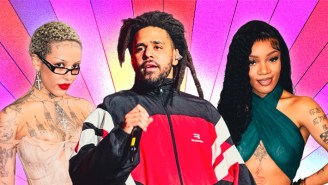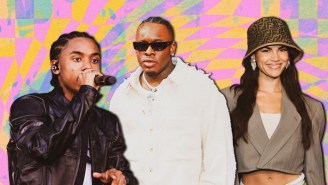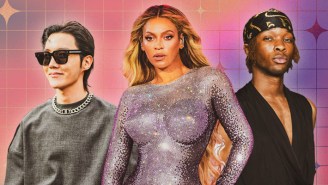The story is common knowledge at this point: back in the mid ’90s, long before Jay Z was Jay Z, the unheralded hustler-turned-rapper from Brooklyn knocked on the doors of every record label imaginable with the remnants of a classic album in hand in search of a deal.
“When Dame could catch me, he would set up these meetings with record labels and drag me to them, but none of them were fucking with us,” Jay recalled in his autobiography/lyrical annotation book Decoded. “Not Columbia, not Def Jam, not Uptown. Sometimes there was talk of a single deal, but whenever it got to the point where it was supposed to be real, the label would renege.”
After no bites, Jay, Dame Dash and Kareem “Biggs” Burke founded Roc-A-Fella Records and set out on their own, raging against the machine and becoming legends in the process.
One detail constantly overlooked is that Jay and co. did sign with a record label. Without the infrastructure in place to actually manufacture and distribute albums, Jay, Dame and Biggs set out looking for what essentially amounted to a partner willing to offer them a pressing and distribution deal, commonly referred to as a P&D, to help complete the parts of the process they weren’t equipped to handle. A P&D is exactly what it sounds like: a label steps in and handles the pressing and distribution of the actual physical product, either for an upfront fee or typically a backend payment from the proceeds earned from the album.
Eventually, Priority Records, stepped in and partnered with Roc-A-Fella, putting together what Jay called in Decoded “a distribution deal that could support a national album release” and the rest is literally history. Priority is, of course, a label knowledgable in the art of producing and distributing underground rap after helping usher in the likes of NWA and their subsequent solo works, the Geto Boys and Scarface’s solo work, WC, Mack 10, Master P and many more. It was that infrastructure, a massive piece of the puzzle that Jay Z did not possess, that allowed him to cultivate a career two decades long and a half a billion dollars strong.
The P&D deal is not unique, it’s essentially the same deal handed out to many independent rap labels and artists with their own sales acumen. Cash Money Records infamously signed one for $30 million, it’s the go-to deal for indie artists who have done most of the ground work themselves building profitable fan bases and creating music without major label interference. It’s a mutually beneficial arrangement: The artists maintain control, the label’s work is minimal, but in order for it to be profitable both sides must work together.
According to Billboard artists can get as much as “an 80 percent to 85 percent profit split, compared with the more standard 50/50 share” from a typical record deal. P&D’s don’t necessarily include promotion, but additional services like promo and marketing from the label can be negotiated, and it benefits them to chip in as more records sold equals a bigger profit share for them. The lower profit share doesn’t affect the label as much because again, their work is minimal, it’s a low risk endeavor.
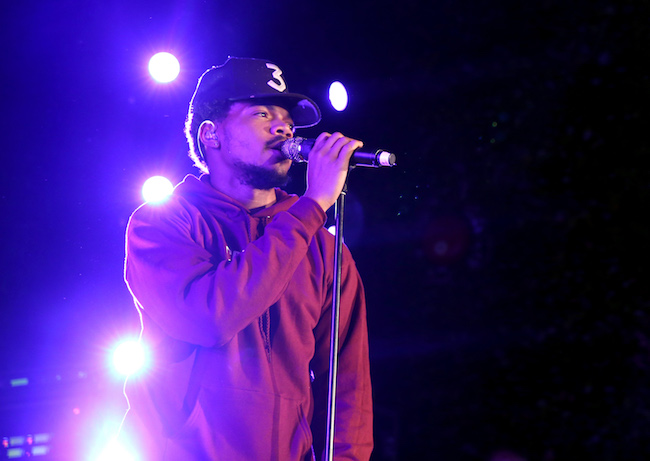
In the new digital world, production and distribution is even less a necessity than it was before. Some artists are able to garner massive followings by simply uploading music online, offering it to their fans for free on various platforms and promoting it on social media. Both services are free, so even the smallest of artists can operate under this model.
With such low overhead costs beyond the actual creation of the music, which can be cheap as well, just about anybody can give it a shot, and anybody with talent and enough ambition can be seen and heard. In the last decade, DIY upstarts like Odd Future, TDE, the A$AP crew have and more have proven this model can succeed. An artist with a team large and determined enough can handle all of the components of their music in house, from production, to mixing, to videography and beyond. When their fanbase is large enough they’re able to cash out by charging for shows, merchandise, meet and greets and endorsements all without a label in the way to cut into the profits and with practically no initial costs to the artist.
In this climate, Apple, has essentially become the most powerful and useful record label in the land. Though Apple doesn’t officially tote a record label — Apple Records exists, but that’s a Beatles creation — their infrastructure has become similar to a label offering P&D’s to anybody in need. Apple Music claimed two huge albums in 2016 that were solely distributed by Apple, Chance The Rapper’s Coloring Book and Frank Ocean’s Blonde.
Yes, both albums eventually made their way to other streaming services, but they began as Apple Exclusives through deals directly with the artist, and the payouts received for those basically served as a traditional record label advance, even if the funding for Blonde was a bit contentious and may result in a lawsuit. The success of both projects has turned Apple Music the streaming service into a de-facto record label and a friendly alternative to a real record label. It’s not just newer artist Apple is working with — don’t forget Britney Spears’ new album was also an Apple Music exclusive, and that after she threw her weight around, Taylor Swift’s discography rests solely in an Apple Music cradle.
The built-in promotional mechanisms are all there, too: Adding artists songs to playlist can boosts record sales, and being associated with the Apple brand — especially as an independent artist — adds a layer of prominence to an artist’s own brand. It’s a co-sign that functions in almost the same way a major label deal does; it says someone who would know thinks this music is valuable. Remember, Apple has sold over a billion iPhones, and Apple Music is a native app on every single one of them. Trial subscriptions may be free, but those streams equate to real sales on Billboard charts, and those are rewarded with real plaques.
With Apple, the artist gets a cash rich (understatement) company with a built-in infrastructure for releasing their music to a growing audience that can be available to anybody with a smart phone within just a few swipes and screen taps. For Apple and their 15 million paying subscribers, these deals practically pay for themselves. Subscriptions vary, but the basic Apple Music monthly rate is $9.99, and that many subscribers in theory should gross the company over $100 million a month. Drake signed with the company for a deal reportedly worth $19 million. As promising and enigmatic as Frank and Chance are, there’s no way they had the leverage to secure a deal worth that much.
Beyond money, there are more benefits for a company like Apple that relishes its cultural relevance. The idea that they’re the home of the Internet’s favorite artist might be worth more than whatever they’ve spent on Frank and Chance in the last year. Promoting themselves as the “safe haven” for artist looking to create big budget, high concept projects might be worth even more. Apple seeks prestige, and the perception that the company is the driving force behind the biggest album of the year, the first streaming-only album to chart on Billboard and possibly be nominated for a few Grammys, along with the return of the industry’s most compelling artist, is worth more than all of that.
However the deals are structured — Apple and all parties involved have been especially mum about partnerships with Frank and Chance — an artist can release the album on their own, independent label or even a ghost label, and Apple can do the rest of the work, while likely even chipping in to fund the production of the album. Coloring Book was a star-studded affair, and even with maximum networking by Chance and his team, it certainly was expensive. If Apple didn’t foot the bill they definitely alleviated the burden.
The same applies to Tidal, even though they obviously lack the funding Apple flaunts. Tidal offers artists the same artistic freedom and streamlined approach of taking the music from the studio and handing it right to the fans, literally in the palms of their hands on the phones. Lil Wayne, T.I. and others have jumped at the opportunity to utilize Tidal as their de-facto label. Future and Drake have done the same with Apple, though their works have also been released in conjunction with their record label homes. Beyonce has executed a delicate balancing act, toggling between Tidal exclusives and the typical Beyonce worldwide releases.
If an Apple — or Tidal — partnership can be so fruitful, the question remains, are labels even necessary anymore?
As the process of producing, releasing and consuming music continues to evolve, so too do the roles of the major players within the process. Consumers are paying less money than ever, but are also forced to do the job of the A&R and find the music for themselves now. In doing so they’re “involved” with the process of promoting an artist and that’s exactly what the labels want to see. It’s mostly a faux involvement, and typically when an artist is easily found online it’s because somebody is making it so. Still, the allure of the “indie” artist is valuable to fans who want to be the earliest on the bandwagon, and even more valuable for labels who want to capitalize on that allure.
A Warner Music Group rep, who agreed to speak with Uproxx on the condition of anonymity, said they still see a role for labels.
“There’s still a home for a label in all of this,” the rep said . “But artists need to come in with leverage.”
While Chance has seen plenty of success going his indie-but-not-quite-indie route, other independent and underground successes have turned to major labels to reach the “next level” that all the co-signs in the world haven’t quite pushed Chance to.
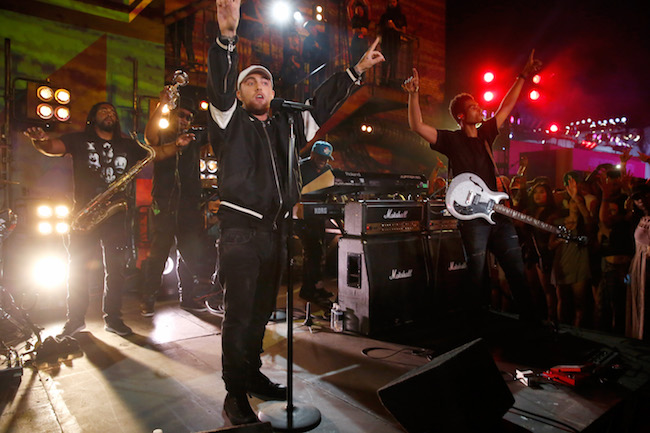
“I didn’t want to end up doing Tech N9ne,” Mac Miller said to Grantland last year after signing his monumental Warner Bros. deal that netted him a cool $10 million as a budget for his own subsidiary imprint REMember. It wasn’t a diss, Mac just wanted to know what exists beyond indie stardom, a feat he’d mastered, becoming the first indie artist in nearly 16 years to have a No. 1 album with Blue Side Park. “I’ve proved to myself what I can do on an independent level,” he told Grantland. “I’d done big tours, I’d had platinum singles, a no. 1 album — so I just wanted to see what the addition would be.”
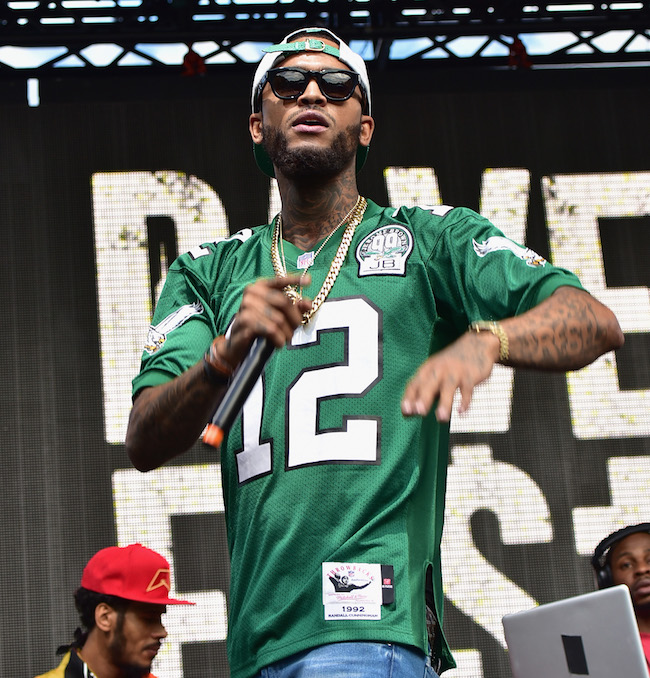
Those sentiments were echoed last week by Dave East, New York’s current blue chip prospect who recently inked a “partnership” with Def Jam, which Billboard reported was a “multi-million-dollar venture.” East had spent years cutting his teeth in New York’s underground scene, pumping out mixtape after mixtape until blogs and eventually Nas took notice, singing the upstart to his Mass Appeal records.
It was a plush deal for an underground star, signed to his idol next to fellow indie darlings like Run The Jewels and Fashawn. But even East made the jump to the majors, telling The Breakfast Club he felt the move was necessary for him, “especially being from New York and not trying to stay in New York.” He made sure not to cut his underground/indie ties, noting the deal was a joint venture with Mass Appeal, but also made it clear that he wants to be much more than an underground star: “I don’t want to just be underground or classified as a certain type of dude,” he said. “So I feel like this was a good move really get what I’m trying to do with my brand and my movement across the world.”
That’s what major labels still offer — expansion beyond a niche and the prospect of stardom, hit records, oh and money. Major labels have the relationships, pocketbooks and infrastructure to practically guarantee all three. If Def Jam gives a Dave East single the Iggy Azalea “Fancy” treatment, he’ll practically be guaranteed a hit and some level of stardom, and as Billboard reported his traditional deal did come with the hefty advance.
But record deals are risky plays for labels in an era where actually selling music is a rarity. So now, much like Apple, they look for finished products that can hold their own weight and have shown they are profitable. “This can be best achieved through grow-houses where management companies develop an artist and assemble a nimble, small team to do the dirty work,” the Warner rep said. “Once a swell starts, they can approach a distributor/label to set a fair agreement or deal to drive it home. We’re best at pouring gas on an already lit flame (rather than) trying to create a spark these days.”
Sometimes, like in the case of Young Thug, this is done through a production deal wherein a lower tier label or company basically agrees to produce, distribute and promote an artist’s work, only to later cash in when said artist eventually signs a major record deal. So gone are the days where labels are discovering stars, or finding prospects and building them into stars. Now, they leave that dirty work to the artists themselves, who then lean on smaller companies — or like Chance, superstar co-signs — to elevate them until they’re deemed worthy of a lucrative payday from a label.
Ultimately, the path to stardom is different for each artist and the vehicle used to travel that road varies as well. Apple has elevated artists, but it has yet to truly break them through the glass ceiling. As popular as Chance has become online, he’s still far from mainstream to the masses, existing in his cozy niche and showered with praise by anybody who comes near it. Both Frank and Chance seem anti-label, but they just might need one to help them truly reach superstar status. Or they could be the artists to break the system, it remains to be seen.




